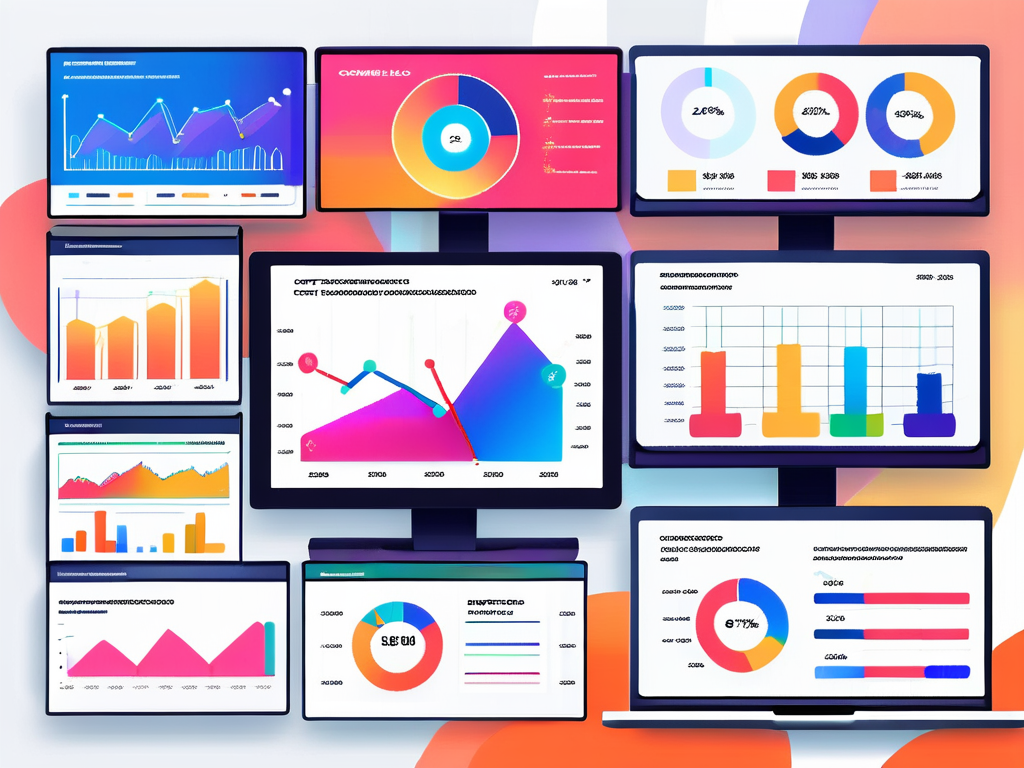Uncategorized
Amazon Ad Formats

In the ever-evolving world of digital advertising, marketers have access to a plethora of ad formats to captivate their target audience. From display ads to video ads, and native ads, each format offers unique advantages that can drive engagement and boost conversion rates. Understanding these formats and leveraging their potential can make all the difference in the success of your advertising campaigns. In this article, we will explore the various ad formats available and discuss how to optimize them for maximum impact.

Learn How to Make Listings That Convert in 2025!
Read our step-by-step guide on how to optimize your listings using Rufus AI insights. Sign up for our newsletter and get your copy for free!
Show me howDisplay ads
Display ads, also known as banner ads or interstitial ads, are the most common form of online advertising. These ads are typically displayed on websites, apps, or social media platforms and come in various sizes and formats. Display ads can be static images, animations, or even rich media ads that incorporate interactive elements. They are effective in generating brand visibility and driving traffic to your website.
When designing display ads, it is crucial to create visually compelling and attention-grabbing creatives. A strong call-to-action and clear message can entice users to click on your ad. Conducting A/B testing with different ad variations can help you identify the most impactful design elements and improve your click-through rates.
One important aspect to consider when creating display ads is the placement. Strategic ad placement can significantly impact the performance of your campaign. Placing ads on websites or apps that cater to your target audience can increase the chances of reaching potential customers. Additionally, considering the user experience is key – intrusive ads may deter users, while well-integrated ads that complement the content can enhance engagement.
Furthermore, optimizing your display ads for mobile devices is essential in today’s digital landscape. With the increasing use of smartphones and tablets, ensuring that your ads are responsive and visually appealing on smaller screens is crucial. Mobile-optimized ads can improve user experience and drive higher conversion rates. By incorporating mobile-specific design elements and considering factors such as load times and layout, you can maximize the effectiveness of your display ad campaigns.
Video ads
Video ads have gained significant popularity in recent years due to their ability to engage users with captivating audiovisual content. In-feed video ads, as the name suggests, are displayed within content feeds, such as social media feeds or news websites. Rewarded video ads, on the other hand, offer users an incentive, such as in-game rewards, in exchange for watching a video ad.
To make the most of video ads, it is essential to create compelling and concise videos that effectively convey your brand message. Keep in mind that users have short attention spans, so it’s crucial to capture their attention within the first few seconds. Additionally, ensuring your videos are mobile-friendly is vital, as most users consume content on their smartphones.
When creating video ads, it’s important to consider the platform on which they will be displayed. Different platforms have varying requirements and best practices for video ads. For example, on social media platforms like Facebook and Instagram, videos autoplay without sound, so incorporating text overlays or visually engaging elements is key to capturing users’ attention as they scroll through their feeds.
Another important aspect to keep in mind when creating video ads is the call-to-action (CTA). A clear and compelling CTA at the end of the video can prompt users to take the desired action, whether it’s visiting a website, downloading an app, or making a purchase. The CTA should be prominently displayed and easy to understand to ensure maximum impact.
Native ads
Native ads seamlessly blend into the surrounding content, providing a non-disruptive advertising experience. In-feed native ads appear within content feeds, mimicking the look and feel of the other articles or posts. Sponsored product ads, on the other hand, promote products within an e-commerce platform in a way that feels organic and relevant to the user.
Creating effective native ads requires a deep understanding of your target audience and the content they engage with. It’s essential to align your ad’s tone, style, and context with the surrounding content to ensure a seamless user experience. Native ads can be highly effective in capturing users’ attention and generating conversions, as they are perceived as less intrusive and more trustworthy.
Ad Targeting Basics
Now that we’ve explored the various ad formats available, let’s dive into the basics of ad targeting. Ad targeting allows you to reach the right audience with your ads, ensuring that your marketing efforts are focused and effective. Here are three primary targeting methods:
Demographic targeting
Demographic targeting involves tailoring your ads to specific demographics, such as age, gender, location, or income level. By understanding your target audience’s demographics, you can create ads that resonate with their interests, needs, and preferences. This form of targeting helps you narrow down your audience and increase the relevance of your ads.
Age demographics play a crucial role in determining the type of content and messaging that will appeal to your target audience. For example, a product targeted towards teenagers will require a different tone and style compared to a product aimed at middle-aged adults. Understanding the age range of your audience allows you to craft ads that speak directly to their life stage and interests.
Location targeting is another essential aspect of demographic targeting. Different regions have unique cultural nuances, preferences, and needs. By tailoring your ads to specific locations, you can address local concerns, language variations, and even climate-specific issues. This level of customization not only increases the relevance of your ads but also shows your audience that you understand and cater to their specific geographical context.
Behavioral targeting
Behavioral targeting involves analyzing user behavior, such as browsing history, search queries, or purchase intent, to deliver personalized ads. This method allows you to target users who have demonstrated certain behaviors that align with your brand or products. By understanding their interests and preferences, you can create highly relevant ads that have a higher chance of engagement and conversion.
One key aspect of behavioral targeting is the use of cookies, which are small pieces of data stored on a user’s device by their web browser. These cookies track the user’s online activities and help advertisers build a profile of their interests and behaviors. This data is then used to serve targeted ads to the user across various websites they visit, creating a seamless and personalized online experience.
Furthermore, behavioral targeting can also encompass retargeting strategies, where ads are shown to users who have previously visited a website but did not complete a desired action, such as making a purchase. By retargeting these users with relevant ads based on their previous interactions, advertisers can increase the likelihood of converting them into customers. This approach not only helps improve conversion rates but also reinforces brand awareness and engagement with the target audience.
Contextual targeting
Contextual targeting focuses on delivering ads based on the content a user is consuming at a particular moment. By analyzing keywords, topics, or categories, you can ensure that your ads are displayed on platforms or websites related to your industry. This targeting method allows you to align your ads with the users’ current context, increasing the likelihood of their interest and engagement.
Ad Optimization for Instacart
Instacart, a popular online grocery delivery platform, offers unique opportunities for advertisers to reach a highly engaged audience. To make the most of your advertising efforts on Instacart, consider the following optimization strategies:
A/B testing is a crucial component of any digital marketing strategy. It allows you to gather valuable data on how your audience interacts with different ad elements and targeting parameters. By analyzing the results of these tests, you can make data-driven decisions to optimize your advertising campaigns for maximum impact.When conducting A/B tests on creative elements, consider testing not only visuals, headlines, and calls-to-action, but also the overall tone and messaging of your ads. Sometimes a small tweak in the wording or color scheme can make a significant difference in engagement rates. Remember, the goal is not just to find what works, but to understand why it works, so you can apply those insights to future campaigns.In addition to testing creative elements, don’t underestimate the power of experimenting with different targeting strategies. Targeting options can include demographics, interests, behaviors, and even specific placements. By segmenting your audience and tailoring your ads to different groups, you can increase relevance and drive higher conversion rates. Keep in mind that consumer behavior is constantly evolving, so ongoing testing and optimization are key to staying ahead in the competitive digital landscape.
Bid strategies (CPC, CPI, CPA)
Instacart offers various bid strategies to suit different advertising goals and budget requirements. Cost-per-click (CPC) bidding allows you to pay only when a user clicks on your ad, ensuring you pay for actual engagement. Cost-per-install (CPI) bidding is suitable for mobile app installations, while cost-per-action (CPA) bidding allows you to pay for specific actions, such as completing a purchase. Choosing the right bid strategy can help you optimize your budget and achieve your desired outcomes.
Automated bidding
Instacart also provides automated bidding options that leverage machine learning algorithms to optimize your ad performance. Automated bidding takes into account various factors, such as historical data and user behavior, to adjust your bids in real-time. By utilizing this feature, you can maximize your campaign’s efficiency and drive better results without constant manual adjustments.
Optimizing your ad formats and targeting strategies on Instacart can significantly impact your advertising effectiveness. By employing the right techniques and continuously monitoring and optimizing your campaigns, you can ensure that your ads reach the right audience at the right time.
LET’S DISCOVER WHAT’S POSSIBLE FOR YOUR BRAND
We’re here to listen and uncover opportunities tailored to your unique goals.
Fill out the form to get started, and you’ll walk away with real insights and actionable recommendations—whether we work together or not.
- HANDS-ON LEADERSHIP
- AWARD-WINNING PARTNERSHIPS
- CUSTOM-BUILT SOLUTIONS







